| Early Spring Date: | March 3 |
| Late Spring Date: | April 25 |
| Best Dates to See in Spring: | March 17 - April 6 |
Ruby-crowned Kinglet
Regulus calendula
| Early Spring Date: | March 1 |
| Late Spring Date: | May 21 |
| Best Dates to See in Spring: | March 31 - May 6 |
Spring: Both Ruby-crowned and Golden-crowned Kinglets spend the winter in the Washington metro area, and you might see either during the winter at Monticello Park. Kinglets are among the smallest songbirds to visit Monticello, along with the Winter Wren and the Blue-gray Gnatcatcher. (Ruby-throated Hummingbirds are smaller, but they are not songbirds.) Both kinglet species breed in Canada and the northern United States. Golden-crowns head north early, and the best time to see one in the spring at Monticello is during the last week of March and the first week of April. Ruby-crowns are most common at Monticello during the third and fourth weeks of April.
Fall: Golden-crowned Kinglets begin to show up at Monticello in early October, and greater numbers arrive about two weeks later. Ruby-crowned Kinglets begin to dribble in during the latter half of September. A lot of them pass through Monticello Park during the second and third weeks in October, and some remain for the winter.
Where to See Them in the Park
Ruby-crowned Kinglets forage in the mid-story of trees and below, and they sometimes are seen in bushes. Golden-crowned Kinglets forage in the mid-story and do not as frequently forage lower. During the spring, about four times as many Ruby-crowns show up in the park as Golden-crowns. Both species are sometimes seen in mixed flocks with other species of small songbirds.
Physical Descriptions
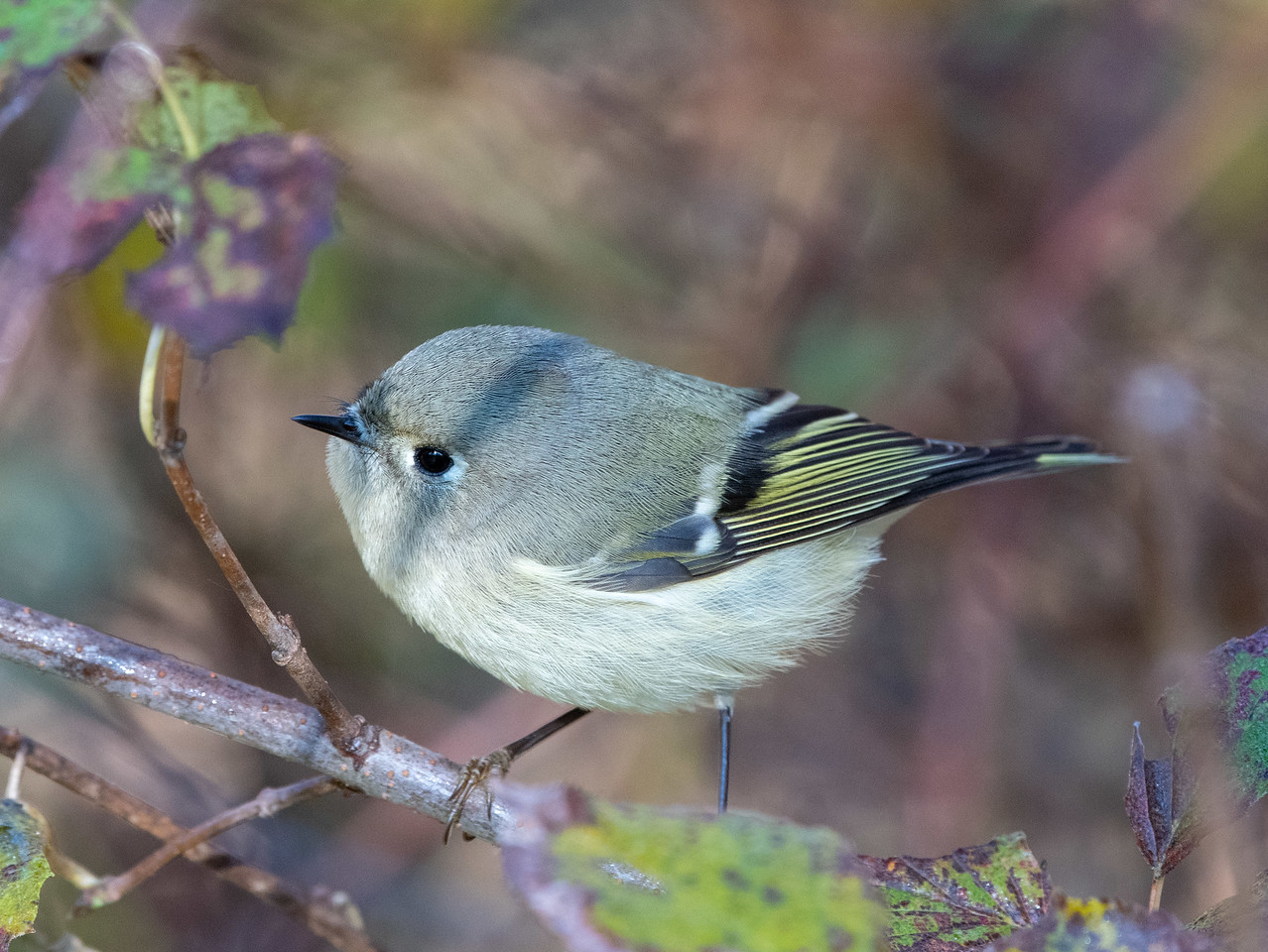
The Ruby-crowned is a small olive-gray bird with two white wingbars and a white eyering. The wing and tail feathers have yellow edges, and the bill is small. Ruby-crowned Kinglets often manically flicks their wings when foraging or perched, and the wing-flicking can be an important identification aid if you cannot see the plumage well. They sometimes keep their wings slightly raised when perched. Their primary food is small insects.
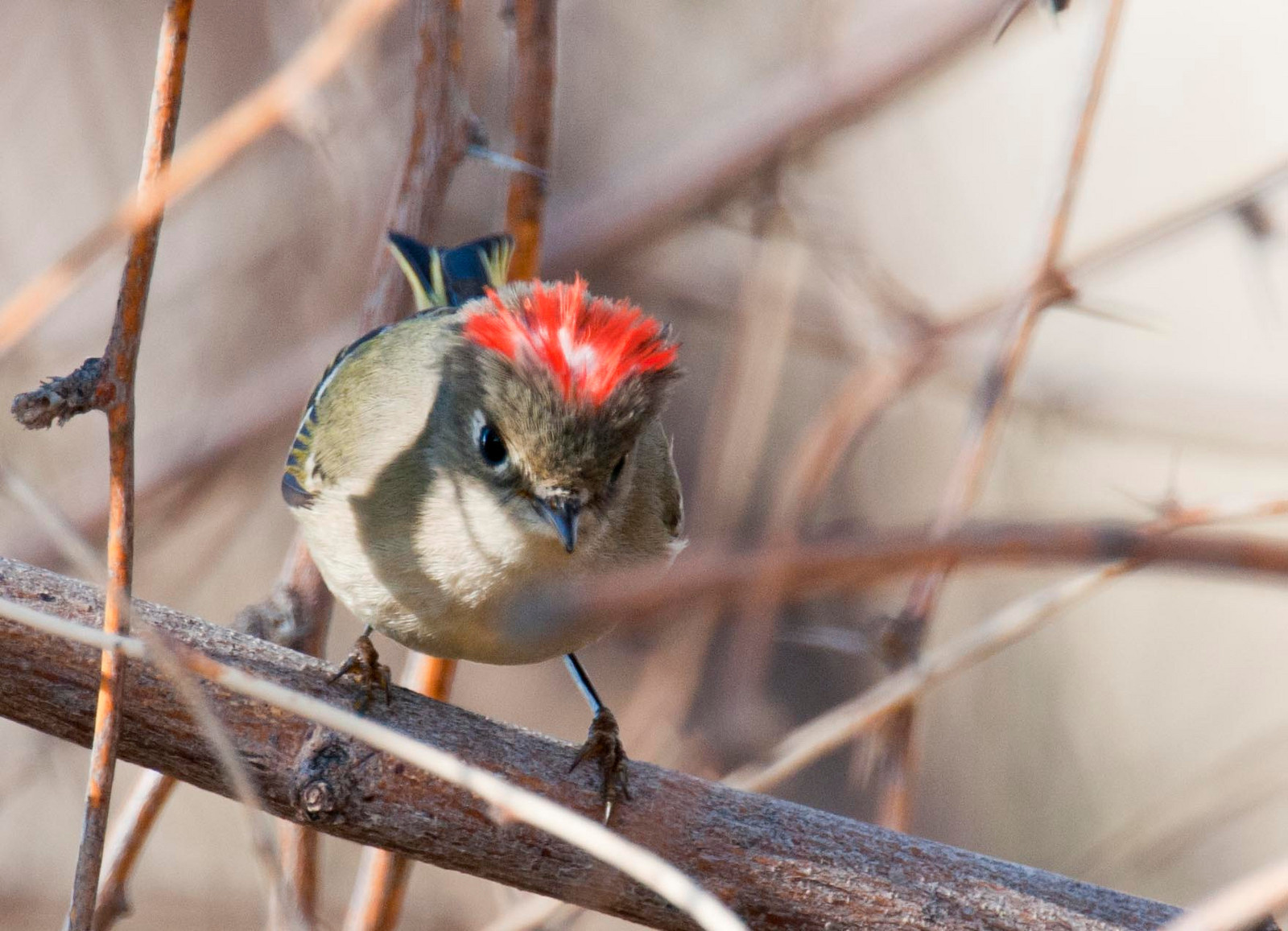
The male Ruby-crowned Kinglet has a ruby crown, while the female does not. The male often keeps his crown hidden, but it shows when the bird is wet or agitated. Ruby-crowns sometimes go into the stream to bathe or drink.
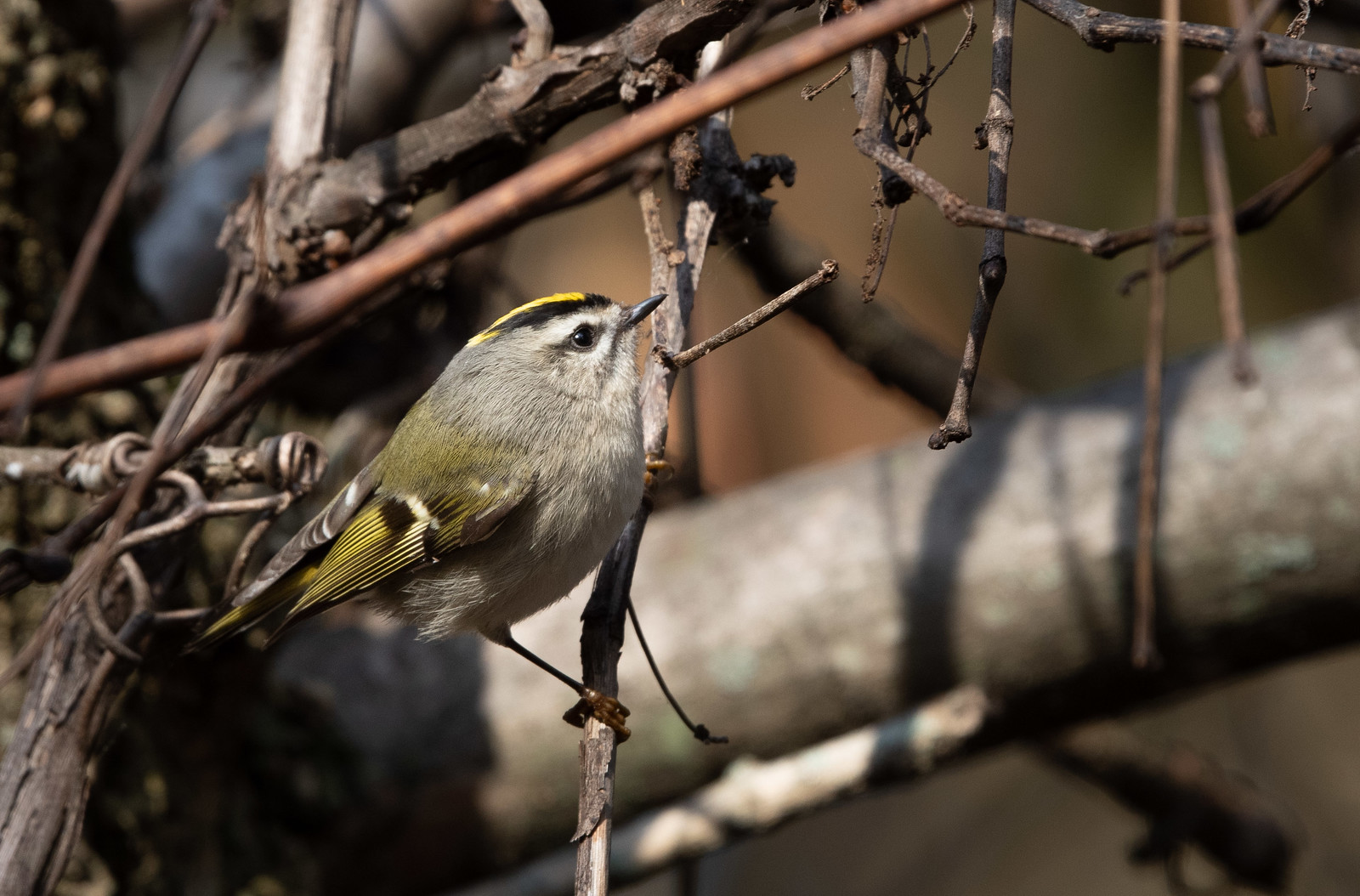
Golden-crowned Kinglets are slightly smaller than the Ruby-crowned and look grayer. Their wing and tail feathers have yellow edges. The best fieldmark for telling them from the Ruby-crowned is the thick black border around the yellow crown. The Ruby-crowned never has black on the head. And unlike the crown of the Ruby-crowned which is sometimes hidden, the yellow on the head of a Golden-crowned is always in view. Golden-crowns are not as likely to go into the stream as the Ruby-crowns.
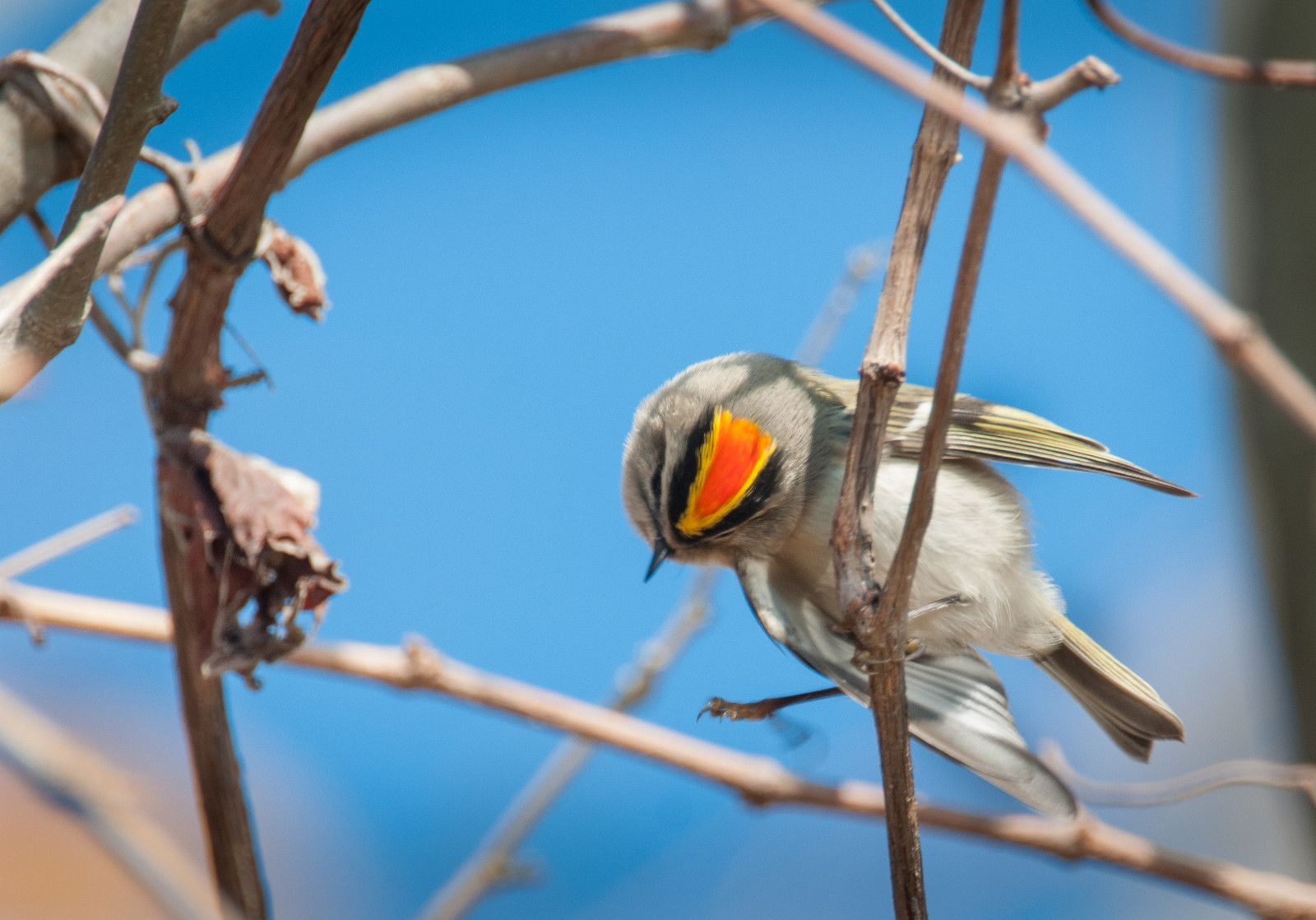
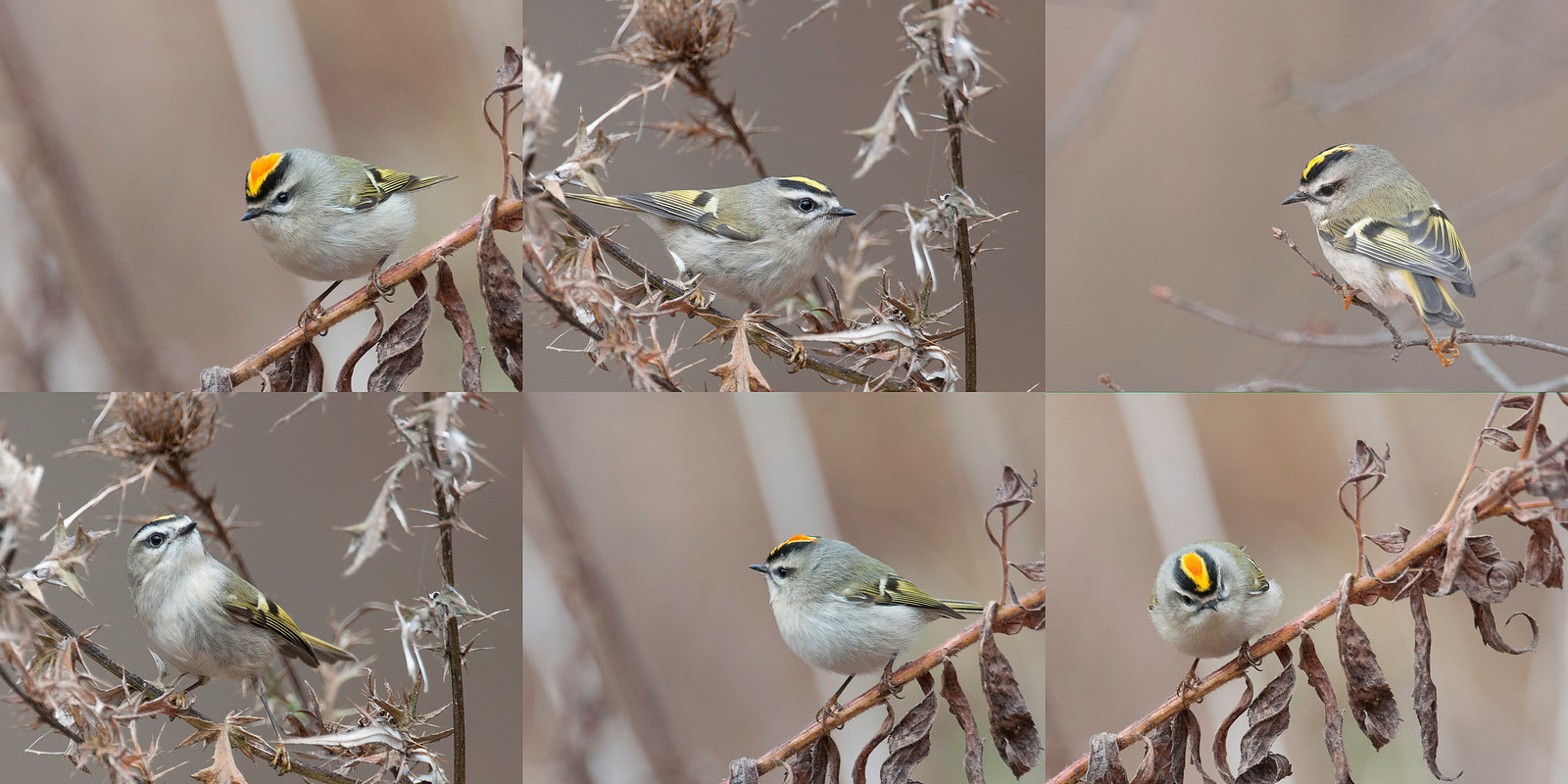
Like the male Ruby-crowned, the male Golden-crowned Kinglet has red in the crown which is often hidden. The female Golden-crowned does not have red in her crown. And as with the male Ruby-crowns, the male Golden-crowns only reveal the red in their crown when excited or wet. The bill is tiny and is used for catching small insects.
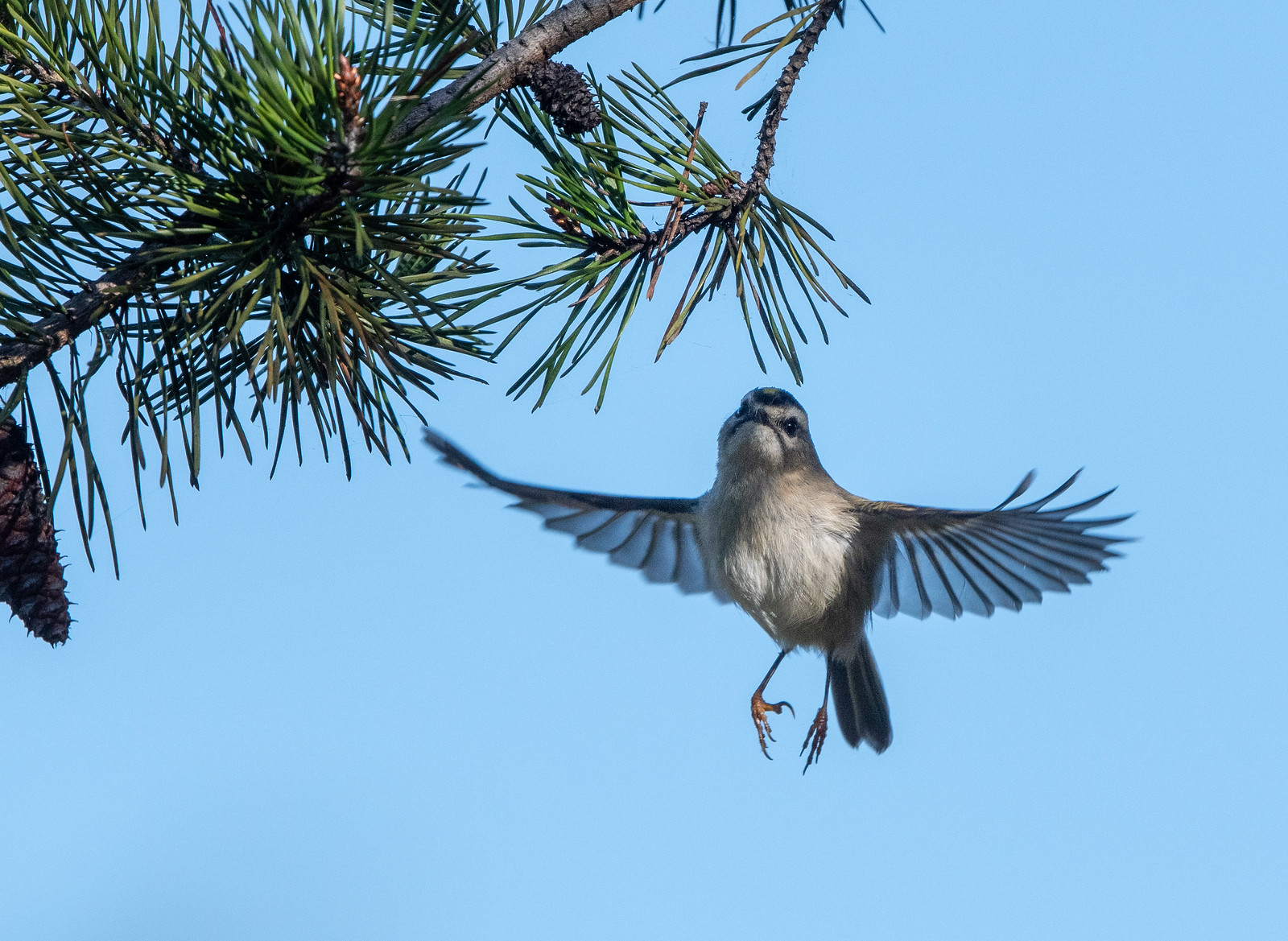
Both kinglet species dart around quickly and glean insects while hovering.
Vocalizations
The Ruby-crowned Kinglet is one of the most energetic singers at Monticello each spring. You can frequently hear the long and complicated wren-like song, which starts with a series of high notes before descending into a long and bubbly jumble of notes. The much simpler song of the Golden-crowned Kinglet is a high-pitched si-si-si-si-si.
Hear the vocalizations of the Ruby-crowned Kinglet.
Hear the vocalizations of the Golden-crowned Kinglet.
Notes
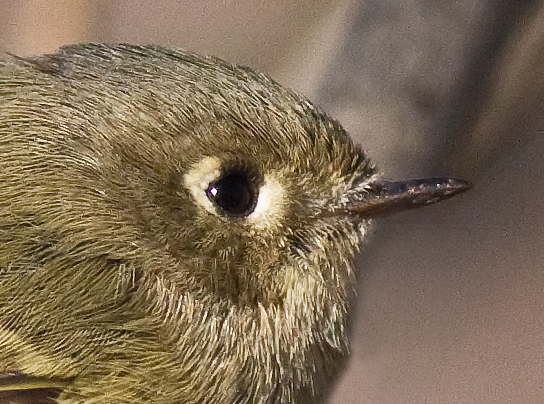
If you look closely at the eye of a Ruby-crowned Kinglet, you can see tiny eyelashes. Not all bird species have eyelashes. For the ones who do, the eyelashes are modified feathers rather than hairs, and they serve a similar purpose to the eyelashes on mammals.
Origin of Names
Common Names: Ruby-crowned from the red feathers on the crown. Golden-crowned from the yellow feathers on the crown. A kinglet is a small king, from the crown.
Genus Name: Regulus means little king, from the crown.
Species Names: Calendula means glowing, from the crown. Satrapa means ruler, also from the crown.
Ruby-crowned Kinglet video footage
Golden-crowned Kinglet video footage
Return to the Index
